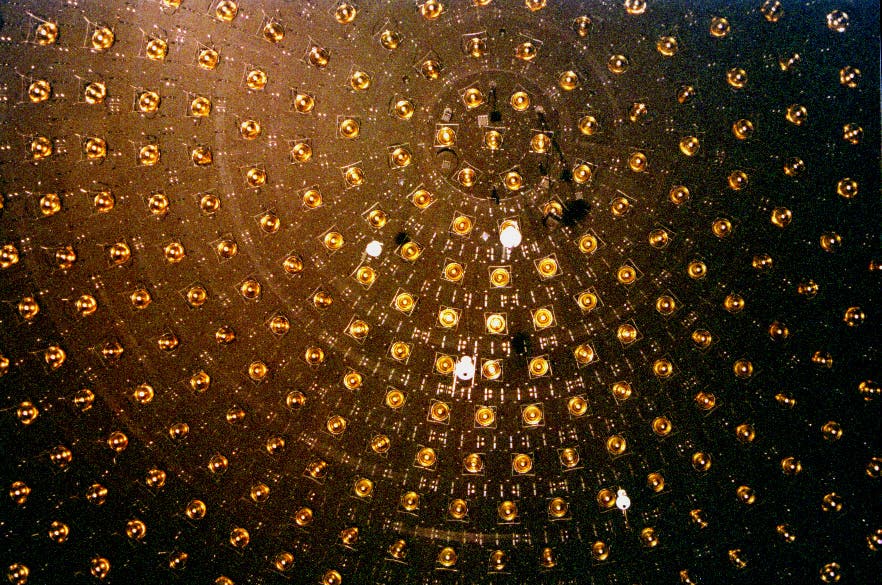Breakthrough study links intermittent fasting to lower risk for Alzheimer’s disease
Alzheimer’s disease affects over six million people in the United States, disrupting memory, behavior, and sleep.

By limiting meals to a specific window each day, scientists found evidence that daily eating patterns could reshape circadian rhythms. (CREDIT: CC BY-SA 4.0)
Alzheimer’s disease affects over six million people in the United States, disrupting memory, behavior, and sleep. One often-overlooked symptom is a broken circadian rhythm—the body’s internal clock that controls sleep and wake cycles. When this rhythm falters, cognitive function suffers, especially after dark.
New findings suggest these sleep and rhythm disruptions may not just be symptoms. They might actually push the disease forward. This insight is beginning to change how researchers think about Alzheimer’s—and how they treat it.
Scientists at the University of California San Diego School of Medicine recently explored a simple yet powerful intervention: time-restricted feeding. By limiting meals to a specific window each day, they found evidence that daily eating patterns could reshape circadian rhythms.
This time-based approach to eating could do more than improve sleep—it might help slow Alzheimer’s itself. The study’s findings challenge long-held views, focusing new attention on the timing of meals rather than just their content.
The circadian system acts like a master switchboard, setting the pace for vital body functions. In people with Alzheimer’s, this rhythm often falls out of sync. Roughly 80% of patients deal with sleep disturbances, which tend to worsen memory and behavior at night.
Until recently, most experts believed this disruption was a side effect of brain degeneration. But fresh evidence suggests something more troubling—it might be a core cause. The misfiring internal clock may be doing more than keeping people up at night.
This change in thinking has opened new research doors. Could resetting the body’s natural rhythm actually slow down Alzheimer's? That’s the question researchers are now asking—and the early answers are promising.
Dr. Paula Desplats, lead author of the study and a professor at UC San Diego School of Medicine, believes these insights could transform care. “For many years, we assumed that the circadian disruptions seen in people with Alzheimer’s are a result of neurodegeneration,” she said. “But now, evidence suggests that circadian disruption might be a primary driver of Alzheimer's pathology.”
Related Stories
If that’s the case, then treating the clock—not just the brain—may be key to helping millions hold on to their minds, their independence, and their sleep.
Time-Restricted Feeding: A Potential Solution
Time-restricted feeding (TRF) is a subset of intermittent fasting. Unlike other fasting methods that may restrict calorie intake, TRF solely limits the window of eating. The recent study, published in Cell Metabolism, explored the potential of TRF in mice models mimicking Alzheimer's disease.
The mice on a TRF schedule were restricted to eat within a six-hour window, translating to about 14 hours of fasting daily for humans. The outcomes were promising.
Compared to their counterparts who had unrestricted access to food, the TRF mice showcased enhanced memory, reduced nighttime hyperactivity, and exhibited a consistent sleep pattern. Moreover, these mice outperformed the control group in cognitive assessments, emphasizing that TRF might curb the behavioral manifestations of Alzheimer’s.
Delving deeper, the researchers discovered molecular-level improvements in the TRF mice. There was differential expression of multiple genes related to Alzheimer’s and neuroinflammation. Most notably, TRF reduced the accumulation of amyloid proteins in the brain, a hallmark of Alzheimer’s disease.
The capability of a mere adjustment in feeding schedules to modify Alzheimer’s progression at the molecular level is nothing short of revolutionary. The beauty of this approach lies in its simplicity – it mandates a lifestyle change instead of drug-based interventions.
“If we can reproduce our results in humans, this approach could be a simple way to dramatically improve the lives of people living with Alzheimer’s and those who care for them,” remarked Desplats.
The Bigger Picture: Implications for Healthcare and Caregiving
Intermittent fasting could substantially transform how we approach Alzheimer's, especially given that circadian disruptions are a primary reason many Alzheimer's patients are moved to nursing homes.
"Anything we can do to help patients restore their circadian rhythm will make a huge difference in how we manage Alzheimer’s," Desplats pointed out.
The potential for TRF to modify the course of Alzheimer’s holds significant promise. Should these results be replicated in human clinical trials, we might be on the cusp of a paradigm shift in Alzheimer’s treatment. And the solution could be as simple as changing when we eat.
Other Benefits of Intermittent Fasting
Scientific studies support several other potential benefits of Intermittent Fasting (IF), particularly when it involves time-restricted eating (such as 16:8 or 18:6) or alternate-day fasting. These benefits are largely tied to changes in hormone levels, metabolic processes, and the body’s cellular repair mechanisms.
One of the most consistent findings is that intermittent fasting helps improve insulin sensitivity. By limiting eating windows, the body has more time to reduce circulating insulin levels, which can improve glucose control and reduce the risk of type 2 diabetes. A 2018 study published in Cell Metabolism showed that an early time-restricted eating schedule (eating only between 8 a.m. and 2 p.m.) improved insulin sensitivity, blood pressure, and oxidative stress markers in prediabetic men. These results suggest that when food intake is aligned with the body’s circadian rhythm, metabolic health improves.
Intermittent fasting also promotes weight loss, often without intentional calorie restriction. The fasting period leads to a reduction in insulin, allowing the body to shift toward burning fat for energy. In a late 2019 review in The New England Journal of Medicine, researchers concluded that IF can lead to a 3–8% reduction in body weight over 3–24 weeks, which is comparable to traditional calorie-restricted diets. Moreover, this approach often leads to a greater reduction in visceral fat—the type of fat most closely linked to chronic diseases.
Beyond metabolic health, IF appears to trigger cellular repair mechanisms such as autophagy, the body’s process of cleaning out damaged cells. Animal studies and early human trials suggest that intermittent fasting may support longevity by reducing inflammation, protecting against neurodegenerative diseases, and enhancing resistance to stress. For example, research from the National Institute on Aging has found that intermittent fasting extends lifespan in rodents and protects brain health by promoting neuronal plasticity and reducing the risk of cognitive decline.
Disclaimer: While these findings are promising, readers are advised against making drastic lifestyle changes without consulting healthcare professionals.
Note: Materials provided above by The Brighter Side of News. Content may be edited for style and length.
Like these kind of feel good stories? Get The Brighter Side of News' newsletter.



